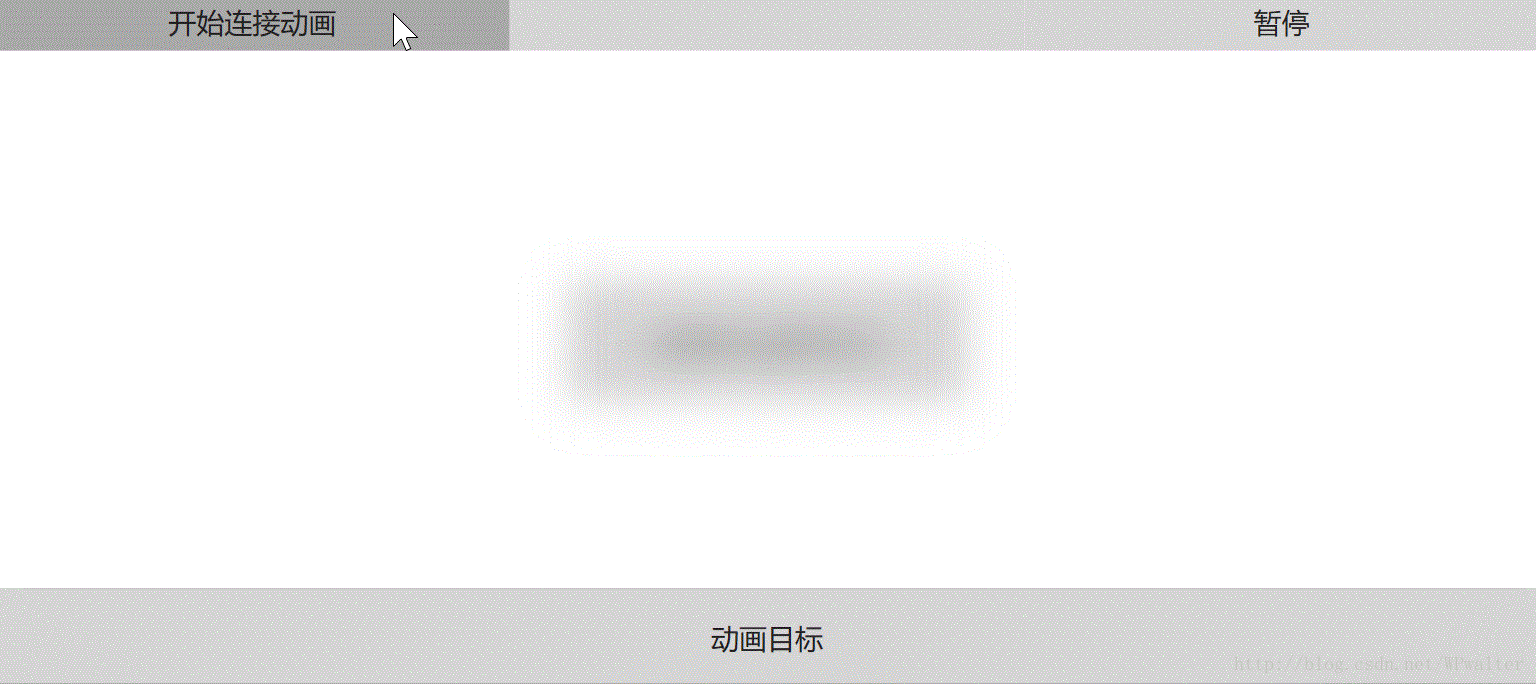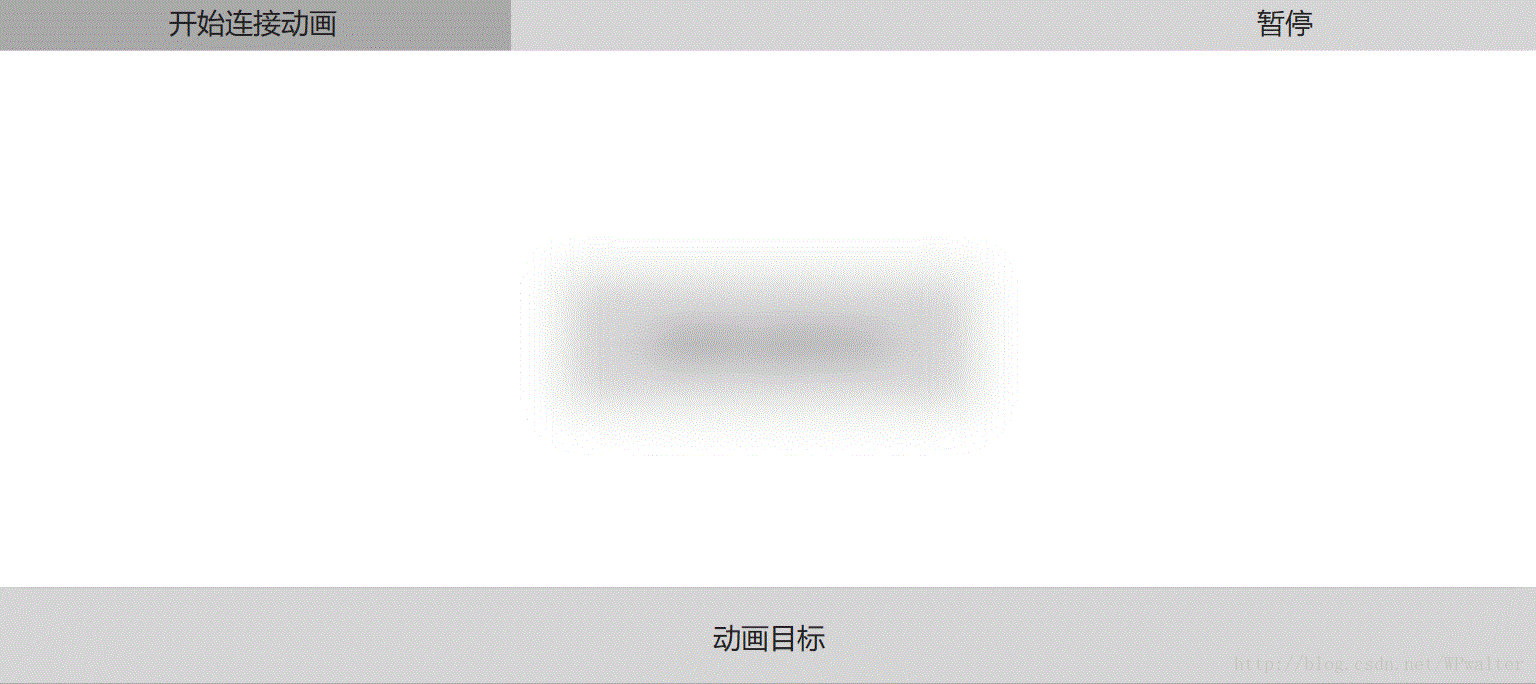Windows 10 的创造者更新为开发者们带来了 Connected Animation 连接动画,这也是 Fluent Design System 的一部分。它的视觉引导性很强,用户能够在它的帮助下迅速定位操作的对象。
不过,这是 UWP,而且还是 Windows 10 Creator’s Update 中才带来的特性,WPF 当然没有。于是,我自己写了一个“简易版本”。

▲ Connected Animation 连接动画
模拟 UWP 中的 API
UWP 中的连接动画能跑起来的最简单代码包含下面两个部分。
准备动画 PrepareToAnimate():
ConnectedAnimationService.GetForCurrentView().PrepareToAnimate(/*string */key, /*UIElement */source);
开始动画 TryStart:
var animation = ConnectedAnimationService.GetForCurrentView().GetAnimation(/*string */key);
animation?.TryStart(/*UIElement */destination);
于是,我们至少需要实现这些 API:
ConnectedAnimationService.GetForCurrentView();ConnectedAnimationService.PrepareToAnimate(string key, UIElement source);ConnectedAnimationService.GetAnimation(string key);ConnectedAnimation.TryStart(UIElement destination);
实现这个 API
现在,我们需要写两个类才能实现上面那些方法:
-
ConnectedAnimationService- 用来管理一个窗口内的所有连接动画 -
ConnectedAnimation- 用来管理和播放一个指定 Key 的连接动画
ConnectedAnimationService
我选用窗口作为一个 ConnectedAnimationService 的管理单元是因为我可以在一个窗口内实现这样的动画,而跨窗口的动画就非常麻烦了。所以,我试用附加属性为 Window 附加一个 ConnectedAnimationService 属性,用于在任何一个 View 所在的地方获取 ConnectedAnimationService 的实例。
每次 PrepareToAnimate 时我创建一个 ConnectedAnimation 实例来管理此次的连接动画。为了方便此后根据 Key 查找 ConnectedAnimation 的实例,我使用字典存储这些实例。
using System;
using System.Collections.Generic;
using System.Windows;
using System.Windows.Media;
using Walterlv.Annotations;
namespace Walterlv.Demo.Media.Animation
{
public class ConnectedAnimationService
{
private ConnectedAnimationService()
{
}
private readonly Dictionary<string, ConnectedAnimation> _connectingAnimations =
new Dictionary<string, ConnectedAnimation>();
public void PrepareToAnimate([NotNull] string key, [NotNull] UIElement source)
{
if (key == null)
{
throw new ArgumentNullException(nameof(key));
}
if (source == null)
{
throw new ArgumentNullException(nameof(source));
}
if (_connectingAnimations.TryGetValue(key, out var info))
{
throw new ArgumentException("指定的 key 已经做好动画准备,不应该重复进行准备。", nameof(key));
}
info = new ConnectedAnimation(key, source, OnAnimationCompleted);
_connectingAnimations.Add(key, info);
}
private void OnAnimationCompleted(object sender, EventArgs e)
{
var key = ((ConnectedAnimation) sender).Key;
if (_connectingAnimations.ContainsKey(key))
{
_connectingAnimations.Remove(key);
}
}
[CanBeNull]
public ConnectedAnimation GetAnimation([NotNull] string key)
{
if (key == null)
{
throw new ArgumentNullException(nameof(key));
}
if (_connectingAnimations.TryGetValue(key, out var info))
{
return info;
}
return null;
}
private static readonly DependencyProperty AnimationServiceProperty =
DependencyProperty.RegisterAttached("AnimationService",
typeof(ConnectedAnimationService), typeof(ConnectedAnimationService),
new PropertyMetadata(default(ConnectedAnimationService)));
public static ConnectedAnimationService GetForCurrentView(Visual visual)
{
var window = Window.GetWindow(visual);
if (window == null)
{
throw new ArgumentException("此 Visual 未连接到可见的视觉树中。", nameof(visual));
}
var service = (ConnectedAnimationService) window.GetValue(AnimationServiceProperty);
if (service == null)
{
service = new ConnectedAnimationService();
window.SetValue(AnimationServiceProperty, service);
}
return service;
}
}
}ConnectedAnimation
这是连接动画的关键实现。
我创建了一个内部类 ConnectedAnimationAdorner 用于在 AdornerLayer 上承载连接动画。AdornerLayer 是 WPF 中的概念,用于在其他控件上叠加显示一些 UI,UWP 中没有这样的特性。
private class ConnectedAnimationAdorner : Adorner
{
private ConnectedAnimationAdorner([NotNull] UIElement adornedElement)
: base(adornedElement)
{
Children = new VisualCollection(this);
IsHitTestVisible = false;
}
internal VisualCollection Children { get; }
protected override int VisualChildrenCount => Children.Count;
protected override Visual GetVisualChild(int index) => Children[index];
protected override Size ArrangeOverride(Size finalSize)
{
foreach (var child in Children.OfType<UIElement>())
{
child.Arrange(new Rect(child.DesiredSize));
}
return finalSize;
}
internal static ConnectedAnimationAdorner FindFrom([NotNull] Visual visual)
{
if (Window.GetWindow(visual)?.Content is UIElement root)
{
var layer = AdornerLayer.GetAdornerLayer(root);
if (layer != null)
{
var adorner = layer.GetAdorners(root)?.OfType<ConnectedAnimationAdorner>().FirstOrDefault();
if (adorner == null)
{
adorner = new ConnectedAnimationAdorner(root);
layer.Add(adorner);
}
return adorner;
}
}
throw new InvalidOperationException("指定的 Visual 尚未连接到可见的视觉树中,找不到用于承载动画的容器。");
}
internal static void ClearFor([NotNull] Visual visual)
{
if (Window.GetWindow(visual)?.Content is UIElement root)
{
var layer = AdornerLayer.GetAdornerLayer(root);
var adorner = layer?.GetAdorners(root)?.OfType<ConnectedAnimationAdorner>().FirstOrDefault();
if (adorner != null)
{
layer.Remove(adorner);
}
}
}
}而 ConnectedAnimationAdorner 的作用是显示一个 ConnectedVisual。ConnectedVisual 包含一个源和一个目标,根据 Progress(进度)属性决定应该分别将源和目标显示到哪个位置,其不透明度分别是多少。
private class ConnectedVisual : DrawingVisual
{
public static readonly DependencyProperty ProgressProperty = DependencyProperty.Register(
"Progress", typeof(double), typeof(ConnectedVisual),
new PropertyMetadata(0.0, OnProgressChanged), ValidateProgress);
public double Progress
{
get => (double) GetValue(ProgressProperty);
set => SetValue(ProgressProperty, value);
}
private static bool ValidateProgress(object value) =>
value is double progress && progress >= 0 && progress <= 1;
private static void OnProgressChanged(DependencyObject d, DependencyPropertyChangedEventArgs e)
{
((ConnectedVisual) d).Render((double) e.NewValue);
}
public ConnectedVisual([NotNull] Visual source, [NotNull] Visual destination)
{
_source = source ?? throw new ArgumentNullException(nameof(source));
_destination = destination ?? throw new ArgumentNullException(nameof(destination));
_sourceBrush = new VisualBrush(source) {Stretch = Stretch.Fill};
_destinationBrush = new VisualBrush(destination) {Stretch = Stretch.Fill};
}
private readonly Visual _source;
private readonly Visual _destination;
private readonly Brush _sourceBrush;
private readonly Brush _destinationBrush;
private Rect _sourceBounds;
private Rect _destinationBounds;
protected override void OnVisualParentChanged(DependencyObject oldParent)
{
if (VisualTreeHelper.GetParent(this) == null)
{
return;
}
var sourceBounds = VisualTreeHelper.GetContentBounds(_source);
if (sourceBounds.IsEmpty)
{
sourceBounds = VisualTreeHelper.GetDescendantBounds(_source);
}
_sourceBounds = new Rect(
_source.PointToScreen(sourceBounds.TopLeft),
_source.PointToScreen(sourceBounds.BottomRight));
_sourceBounds = new Rect(
PointFromScreen(_sourceBounds.TopLeft),
PointFromScreen(_sourceBounds.BottomRight));
var destinationBounds = VisualTreeHelper.GetContentBounds(_destination);
if (destinationBounds.IsEmpty)
{
destinationBounds = VisualTreeHelper.GetDescendantBounds(_destination);
}
_destinationBounds = new Rect(
_destination.PointToScreen(destinationBounds.TopLeft),
_destination.PointToScreen(destinationBounds.BottomRight));
_destinationBounds = new Rect(
PointFromScreen(_destinationBounds.TopLeft),
PointFromScreen(_destinationBounds.BottomRight));
}
private void Render(double progress)
{
var bounds = new Rect(
(_destinationBounds.Left - _sourceBounds.Left) * progress + _sourceBounds.Left,
(_destinationBounds.Top - _sourceBounds.Top) * progress + _sourceBounds.Top,
(_destinationBounds.Width - _sourceBounds.Width) * progress + _sourceBounds.Width,
(_destinationBounds.Height - _sourceBounds.Height) * progress + _sourceBounds.Height);
using (var dc = RenderOpen())
{
dc.DrawRectangle(_sourceBrush, null, bounds);
dc.PushOpacity(progress);
dc.DrawRectangle(_destinationBrush, null, bounds);
dc.Pop();
}
}
}最后,用一个 DoubleAnimation 控制 Progress 属性,来实现连接动画。
完整的包含内部类的代码如下:
using System;
using System.Collections.Generic;
using System.Linq;
using System.Windows;
using System.Windows.Documents;
using System.Windows.Media;
using System.Windows.Media.Animation;
using Walterlv.Annotations;
namespace Walterlv.Demo.Media.Animation
{
public class ConnectedAnimation
{
internal ConnectedAnimation([NotNull] string key, [NotNull] UIElement source, [NotNull] EventHandler completed)
{
Key = key ?? throw new ArgumentNullException(nameof(key));
_source = source ?? throw new ArgumentNullException(nameof(source));
_reportCompleted = completed ?? throw new ArgumentNullException(nameof(completed));
}
public string Key { get; }
private readonly UIElement _source;
private readonly EventHandler _reportCompleted;
public bool TryStart([NotNull] UIElement destination)
{
return TryStart(destination, Enumerable.Empty<UIElement>());
}
public bool TryStart([NotNull] UIElement destination, [NotNull] IEnumerable<UIElement> coordinatedElements)
{
if (destination == null)
{
throw new ArgumentNullException(nameof(destination));
}
if (coordinatedElements == null)
{
throw new ArgumentNullException(nameof(coordinatedElements));
}
if (Equals(_source, destination))
{
return false;
}
// 正在播动画?动画播完废弃了?false
// 准备播放连接动画。
var adorner = ConnectedAnimationAdorner.FindFrom(destination);
var connectionHost = new ConnectedVisual(_source, destination);
adorner.Children.Add(connectionHost);
var storyboard = new Storyboard();
var animation = new DoubleAnimation(0.0, 1.0, new Duration(TimeSpan.FromSeconds(10.6)))
{
EasingFunction = new CubicEase {EasingMode = EasingMode.EaseInOut},
};
Storyboard.SetTarget(animation, connectionHost);
Storyboard.SetTargetProperty(animation, new PropertyPath(ConnectedVisual.ProgressProperty.Name));
storyboard.Children.Add(animation);
storyboard.Completed += (sender, args) =>
{
_reportCompleted(this, EventArgs.Empty);
//destination.ClearValue(UIElement.VisibilityProperty);
adorner.Children.Remove(connectionHost);
};
//destination.Visibility = Visibility.Hidden;
storyboard.Begin();
return true;
}
private class ConnectedVisual : DrawingVisual
{
public static readonly DependencyProperty ProgressProperty = DependencyProperty.Register(
"Progress", typeof(double), typeof(ConnectedVisual),
new PropertyMetadata(0.0, OnProgressChanged), ValidateProgress);
public double Progress
{
get => (double) GetValue(ProgressProperty);
set => SetValue(ProgressProperty, value);
}
private static bool ValidateProgress(object value) =>
value is double progress && progress >= 0 && progress <= 1;
private static void OnProgressChanged(DependencyObject d, DependencyPropertyChangedEventArgs e)
{
((ConnectedVisual) d).Render((double) e.NewValue);
}
public ConnectedVisual([NotNull] Visual source, [NotNull] Visual destination)
{
_source = source ?? throw new ArgumentNullException(nameof(source));
_destination = destination ?? throw new ArgumentNullException(nameof(destination));
_sourceBrush = new VisualBrush(source) {Stretch = Stretch.Fill};
_destinationBrush = new VisualBrush(destination) {Stretch = Stretch.Fill};
}
private readonly Visual _source;
private readonly Visual _destination;
private readonly Brush _sourceBrush;
private readonly Brush _destinationBrush;
private Rect _sourceBounds;
private Rect _destinationBounds;
protected override void OnVisualParentChanged(DependencyObject oldParent)
{
if (VisualTreeHelper.GetParent(this) == null)
{
return;
}
var sourceBounds = VisualTreeHelper.GetContentBounds(_source);
if (sourceBounds.IsEmpty)
{
sourceBounds = VisualTreeHelper.GetDescendantBounds(_source);
}
_sourceBounds = new Rect(
_source.PointToScreen(sourceBounds.TopLeft),
_source.PointToScreen(sourceBounds.BottomRight));
_sourceBounds = new Rect(
PointFromScreen(_sourceBounds.TopLeft),
PointFromScreen(_sourceBounds.BottomRight));
var destinationBounds = VisualTreeHelper.GetContentBounds(_destination);
if (destinationBounds.IsEmpty)
{
destinationBounds = VisualTreeHelper.GetDescendantBounds(_destination);
}
_destinationBounds = new Rect(
_destination.PointToScreen(destinationBounds.TopLeft),
_destination.PointToScreen(destinationBounds.BottomRight));
_destinationBounds = new Rect(
PointFromScreen(_destinationBounds.TopLeft),
PointFromScreen(_destinationBounds.BottomRight));
}
private void Render(double progress)
{
var bounds = new Rect(
(_destinationBounds.Left - _sourceBounds.Left) * progress + _sourceBounds.Left,
(_destinationBounds.Top - _sourceBounds.Top) * progress + _sourceBounds.Top,
(_destinationBounds.Width - _sourceBounds.Width) * progress + _sourceBounds.Width,
(_destinationBounds.Height - _sourceBounds.Height) * progress + _sourceBounds.Height);
using (var dc = RenderOpen())
{
dc.DrawRectangle(_sourceBrush, null, bounds);
dc.PushOpacity(progress);
dc.DrawRectangle(_destinationBrush, null, bounds);
dc.Pop();
}
}
}
private class ConnectedAnimationAdorner : Adorner
{
private ConnectedAnimationAdorner([NotNull] UIElement adornedElement)
: base(adornedElement)
{
Children = new VisualCollection(this);
IsHitTestVisible = false;
}
internal VisualCollection Children { get; }
protected override int VisualChildrenCount => Children.Count;
protected override Visual GetVisualChild(int index) => Children[index];
protected override Size ArrangeOverride(Size finalSize)
{
foreach (var child in Children.OfType<UIElement>())
{
child.Arrange(new Rect(child.DesiredSize));
}
return finalSize;
}
internal static ConnectedAnimationAdorner FindFrom([NotNull] Visual visual)
{
if (Window.GetWindow(visual)?.Content is UIElement root)
{
var layer = AdornerLayer.GetAdornerLayer(root);
if (layer != null)
{
var adorner = layer.GetAdorners(root)?.OfType<ConnectedAnimationAdorner>().FirstOrDefault();
if (adorner == null)
{
adorner = new ConnectedAnimationAdorner(root);
layer.Add(adorner);
}
return adorner;
}
}
throw new InvalidOperationException("指定的 Visual 尚未连接到可见的视觉树中,找不到用于承载动画的容器。");
}
internal static void ClearFor([NotNull] Visual visual)
{
if (Window.GetWindow(visual)?.Content is UIElement root)
{
var layer = AdornerLayer.GetAdornerLayer(root);
var adorner = layer?.GetAdorners(root)?.OfType<ConnectedAnimationAdorner>().FirstOrDefault();
if (adorner != null)
{
layer.Remove(adorner);
}
}
}
}
}
}调用
我在一个按钮的点击事件里面尝试调用上面的代码:
private int index;
private void AnimationButton_Click(object sender, RoutedEventArgs e)
{
BeginConnectedAnimation((UIElement)sender, ConnectionDestination);
}
private async void BeginConnectedAnimation(UIElement source, UIElement destination)
{
var service = ConnectedAnimationService.GetForCurrentView(this);
service.PrepareToAnimate($"Test{index}", source);
// 这里特意写在了同一个方法中,以示效果。事实上,只要是同一个窗口中的两个对象都可以实现。
var animation = service.GetAnimation($"Test{index}");
animation?.TryStart(destination);
// 每次点击都使用不同的 Key。
index++;
}
▲ 上面的代码做的连接动画
目前的局限性以及改进计划
然而稍微试试不难发现,这段代码很难将控件本身隐藏起来(设置 Visibility 为 Collapsed),也就是说如果源控件和目标控件一直显示,那么动画期间就不允许隐藏(不同时显示就没有这个问题)。这样也就出不来“连接”的感觉,而是覆盖的感觉。
通过修改调用方的代码,可以规避这个问题。而做法是隐藏控件本身,但对控件内部的可视元素子级进行动画。这样,动画就仅限继承自 Control 的那些元素(例如 Button,UserControl 了)。
private async void BeginConnectedAnimation(UIElement source, UIElement destination)
{
source.Visibility = Visibility.Hidden;
ConnectionDestination.Visibility = Visibility.Hidden;
var animatingSource = (UIElement) VisualTreeHelper.GetChild(source, 0);
var animatingDestination = (UIElement) VisualTreeHelper.GetChild(destination, 0);
var service = ConnectedAnimationService.GetForCurrentView(this);
service.PrepareToAnimate($"Test{index}", animatingSource);
var animation = service.GetAnimation($"Test{index}");
animation?.TryStart(animatingDestination);
index++;
await Task.Delay(600);
source.ClearValue(VisibilityProperty);
ConnectionDestination.ClearValue(VisibilityProperty);
}
▲ 修改后的代码做的连接动画
现在,我正试图通过截图和像素着色器(Shader Effect)来实现更加通用的 ConnectedAnimation,正在努力编写中……

